One day, I was astonished to sense movement that somehow suggested a wavering fluid in the solid pieces of glass. It was because the small pyramid-shaped mountain of glass, standing about 7 or 8 meters high, bore down on me exactly like an enormous white-capped wave widely striking a seacoast, heralding an approaching storm. It was then the I had a visual hallucination of "glass made of water."
The factory was obviously one that recycled broken glass into sheet glass. Broken glass was melted down and turned into new glass for different uses. I have never inquired about where broken glass came from. But, as the uneven light radiating from the mountain of glass attested, there was no mistaking the fact that glass products used in countless different ways throughout Japan had been gathered in that place simply because they were made of the same material. Glass can be mixed with all other kinds of glass. In that sense, it is fluid like water. Georges Bataille has aptly described animalint elligence, which does not objectivize things or create cognitive boundaries between objects, as a state in which "water exists within water." The ontol ogy of water, too, is clearly something that is ensured by this sort of inner continuity.
If so, there is a strange correspondence between the dark faces of all the workers at this factory in recent years, which suggest the existence of workers from different countries, and the ontology of glass which resembles a fluid. Glass is a hard amorphous substance without crystals that is made by melting silica, limestone, and sodium carbonate at a high temperature until they fuse, whereupon the mixture is rapidly cooled. Thus glass itself is a composite of different materials. By the same token, the cultural heterogeneity now developing among the glass factory workers constitutes a hybrid chaos that rejects the formation of a solitary crystalline structure like the local culture of the workers' homelands, such as Brazil, Thailand, Iran, China, or Peru. When these two levels are juxtaposed, it is evident that glass, figuratively speaking, possesses a privileged nature as a cultural metaphor that vividly suggests the migration, hybridity, and intermixing of countless human beings, a phenomenon that is sweeping society today.
In this way, the everyday scene at the glass factory strongly suggested to me the fresh potential of a writhing fluid as a composite form possessed with in contemporary culture that is seeking to emerge out of what is still a fragile, precarious existence.
* * *
My discovery of the affinity between water and glass immediately invited associations with the city of Venice, whose existence has continued to find these two substances as irreplaceable assets. It is no coincidence that the 13 th-century Venetian city-state floating on the sea gave rise to a unique glassmaking art, the gift of cultural contacts achieved through a mode of commu nication that linked the city with the world by means of water. In the history of ideas, one can also find grounds for the metaphor of fluid in Venetian glass, assuming that the sea, as a conduit for civilization, was responsible for the spread of glassmaking technology.
This slightly "touristic" correlation lures me beyond Venice to a city lying only 500 kilometers to the southwest that has been cursed in modern times. Historically, as the point where the Catholic, Eastern Orthodox, Islamic, and Jewish religions converge, the ancient city of Sarajevo has formed a unique cultural crossroads in Eastern Europe. Now, however, as the capital of Bosnia-Herzegovina, the city has acquired a reputation as one of the most brutal and protracted urban battlefields in the former Yugoslavia.
Cuaderno de Sarajevo (Sarajevo Notes, 1993), Juan Goytisolo's account of Sara- jevo as a battleground, has been acclaimed for its reportage steeped in historical insights, including the following passage:

At the same time, however, a kind of handmade light produced by glass illumi nates----together with a faint yearning to live----this violent darkness of the night, which, one could argue, the entire world, under the threat of ter rorism, is simultaneously experiencing. The Sarajevo Survival Guide (1993), a book compiled by a Sarajevan activist group called FAMA that adopts the pr actical form of a guidebook, brilliantly delineates the reality of the city- turned-battlefield as a place where people live. After describing the strat egies used by residents to obtain water, the book explains how the dark nigh ts are spent:
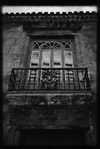
As this inevitable cultural displacement progresses, efforts to return once more to an illusory world order have only intensified. The world's reactionary, repressive response is becoming harsher toward the writers and artists, scattered around the world in a kind of diaspora, who are breaking down national barriers and the walls around linguistic communities, as they seek to launch new interlinking alliances rather than reverting to essentialist illusions.
As Goytisolo correctly implies, the coolness of the European community toward the city of Sarajevo can also be perceived as an expression of hatred and antagonism by those seeking to maintain ethnic and religious dominance, toward this hybrid city, with its unique history of heterogeneity at the crossroads of multiple religions and cultures. Sarajevo has lived through the centuries as a "setting for encounters and convergences, a setting where differences, instead of producing exclusion, mix with and enrich each other as a result of their mutual influence and interpenetration." Indeed, the city may have been forced to bear today's tragedy precisely because of that history of cultural mixing.
How are we to envision, beyond the glass fragments on the streets of Sarajevo today, the new position of autonomy that might in the future be obtained by individuals who are trying, consciously or unconsciously, to transcend the borders that divide cultures? This kind of question inevitably demands of us fundamental changes in the topography generated by the awakeness of identity.
Now that the customary boundaries of the self founded upon the uniqueness of all forms of expression (political, intellectual, and artistic) have been broken, what we need to do is to practice what could be called a new "politics of subjectivity." In that sphere, the identity of the self will no longer exist as something self-evident from the differences that distinguish the self from others, Instead the connective power of identity will be measured in terms of the strength of otherness, which renews autonomy itself while constantly traversing the self. It is a matter of perceiving the flow of otherness that permeates an entity, and, indeed, of diving into the thick of the molecular battle being waged inside one's own body.
At that point, subjectivity will no longer possess borders. Living without borders also involves transforming the focus of the self into a setting for dynamic communication and association. The Chicana poet Gloria Anzaldua, who keeps producing words noted for unusual tolerance and cohesiveness on the Mexican-American border, a region characterized by relentless cultural intermixing, appeals to all like-minded individuals trying to embark upon the politics of subjectivity, urging them to "become a crossroads":
you are the battleground
where enemies are kin to each other;
you are at home, a stranger,
the border disputes have been settled
the volley of shots have shuttered the truce
you are wounded, lost in action
dead, fighting back;
To live in the Borderlands means
the mill with the razor white teeth wants to shred off
your olive-red skin, crush out the kernel, your heart
pound you pinch you roll you out
smelling like white bread but dead;
To survive the Borderlands
you must live sin fronteras
be a crossroads.(3)
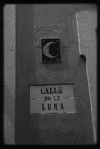
The Vietnam-born filmmaker and poet Trinh T. Minh-ha, who emigrated to the United States before the confusion surrounding the fall of Saigon when she was a child, continues to produce experimental films that, from her perspective as a wanderer, void the illusory dichotomy of Orient/Occident. She describes thus the benefits that travel as a crossroads brings to our thinking:
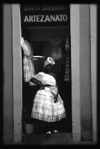
Such travelers are sometimes referred to as "migrants," " refugees," or as membres of a "diaspora." However, they do not directly denote the actual experiences of exiles or refugees. That is because, at a time when the possibility of travel is open to all people, travel itself becomes a habitat for those who bravely choose to sever their own existence from the roots of fantasy, and transfer it to routes that are founded in the depths of history. It means leaving one's native of the realm of travel, which constitutes displacement.
Following Edward Said's expression, let us call the locus of that journey an "ec-centric journey." A Palestinian intellectual in exile, Said has been forced to lead the "exotic existence" of a permanent wayfarer. He is not referring to traditional modes of travel, what might be called the journey of a colonialist, who has a guaranteed starting point, destination, and home to return to. He is talking about the most real of modern man's ideas of travel: wandering with major detours along the central axis underpinning world order. There, travel is not a means of possessing information about distant lands, exploiting it as Western knowledge, or usurping and ruling territory. For Said, the ec-centric journey is envisioned as the awareness of a shipwrecked person in a drifting boat.
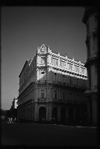
The mention of the 13th-century adventurer and Venetian merchant Marco Polo's name in such a vision triggers further associations. What if we superimpose the displaced persons belonging to the modern diaspora on the journey of Marco Polo, who spent 26 years traveling from Little Armenia, to Persia, Tibet, Cathay, Chanpa(Vietnam), and along the Indian Sea, before he returned to Venice in 1295--exactly 700 years ago--and conveyed to Westerners for the first time an image of the East? To put it another way, the countless fragments of glass produced by the cultural hybridity encompassing contemporary society and molecular civil war can be divined in the brilliance of the Venetian art of glassmaking which flowered in the thirteenth century as a result of medieval cultural interaction.
Once again I have discovered a mysterious seed of reality lurking in that strange vision of "glass made of water." Glass as a handmade light illuminating the darkness of civil war, as a crossroads, as an exile, as a shipwrecked person. In its fluid form brimming with the plasticity of water, I perceive the existence of a new horizon that links land, culture, identity, and language in the future. The Nobel-prize winning poet Derek Walcott, a native of Saint Lucia in the Caribbean Sea, has written:
shines through the brown-bricked glass above your head
as bright as whisky.
of Europe watching the evening river mint
its Thames and the Neva rustling like banknotes,
then, black on gold, the Hudson's silhouettes?
From frozen Neva to Hudson pours,
Under airport domes, the echoing stations,
the tributary of migrants whom exile
has made as classless as the common cold,
citizens of a language that is now yours.(6)
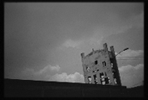
(Translated into English by Janet Goff)
(2)FAMA ed.,Sarajevo Ryoko Annai{Sarajevo Suvival Guide}, Tokyo: Sanshu-sha, 1994.
(3)Gloria Anzaldua, "To live in the Borderlands means you," in Borderlands/la Frontera: The New Mestiza.San Francisco: Spinsters/Aunt Lute, 1987.
(4)Trinh T. Minh-ha. "Other than myself/my other self," in George Robertson et al., eds., Travellers' Tales: Narratives of Home and Displacement.London: Routledge, 1994.
(5)Edward Said. Representations of the Intellectual. The 1993 Reith Lectures. New York: Vintage, 1994.
(6)Derek Walcott. "Forest of Europe," in Selected Poetry. Oxford: Heinemann, 1981.